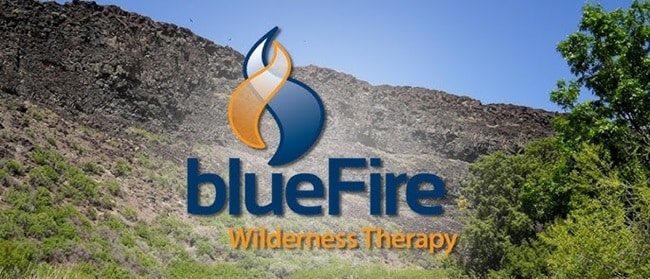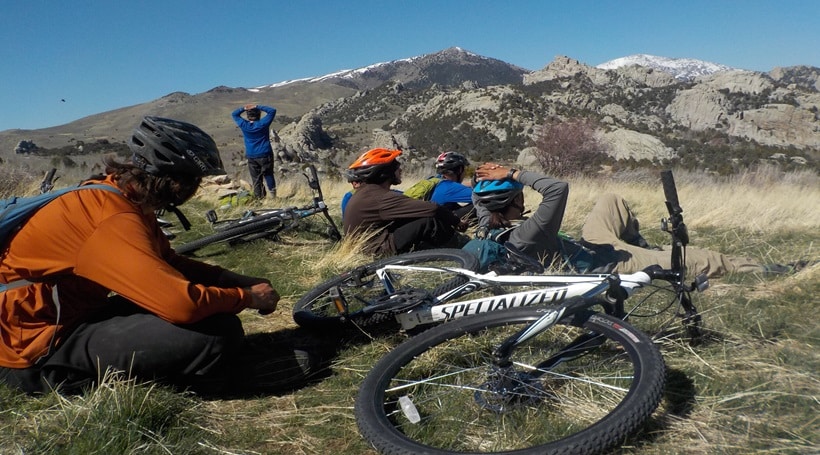Last Updated on January 1, 2025
In the realm of therapeutic programs designed for adolescents and young adults facing various challenges, wilderness therapy stands out as a transformative and impactful approach. Among the numerous programs available, BlueFire Wilderness Therapy has garnered attention for its unique methodology and promising outcomes. This review delves into the various facets of BlueFire Wilderness, examining its philosophy, programs, therapeutic approach, safety measures, and overall effectiveness. Through detailed analysis and comprehensive insights, this review aims to provide a clear understanding of what BlueFire Wilderness Therapy offers to its participants and their families.

Philosophy and Approach
BlueFire Wilderness Therapy is built on the foundational belief that nature, combined with structured therapeutic intervention, can provide profound healing and personal growth opportunities. The program leverages the inherent challenges and tranquility of the wilderness to foster resilience, self-discovery, and emotional growth among its participants. The philosophy underscores the importance of individualized care, asserting that each participant’s journey is unique and requires a tailored approach. This personalized methodology ensures that the therapeutic goals align with the specific needs and challenges of each individual, thereby enhancing the potential for positive outcomes.
Therapeutic Approach
BlueFire Wilderness Therapy employs a multifaceted therapeutic approach that combines traditional counseling techniques with adventure-based therapy. Licensed therapists work closely with participants, utilizing evidence-based practices such as Cognitive Behavioral Therapy (CBT), Dialectical Behavior Therapy (DBT), and mindfulness practices. The therapeutic process is deeply intertwined with daily activities, allowing participants to apply and reflect on their learning in real time.
Group therapy sessions are a cornerstone of the program, offering participants a platform to share their experiences, challenges, and insights. These sessions foster a sense of community and mutual support, crucial elements for emotional healing. Additionally, the program emphasizes the importance of family involvement, providing regular updates and family therapy sessions to ensure a holistic approach to the participant’s well-being.
Programs Offered
BlueFire Wilderness Therapy caters to a diverse age group, typically ranging from adolescents to young adults. The programs are meticulously designed to address a wide spectrum of emotional, behavioral, and psychological challenges. These include, but are not limited to, anxiety, depression, ADHD, substance abuse, and issues stemming from academic and family pressures. The programs are segregated based on age groups, ensuring that the therapeutic content and activities are age-appropriate and relevant.
Participants are immersed in an outdoor living environment where they engage in various activities such as hiking, camping, and wilderness skills acquisition. These activities are not only intended to teach practical skills but also to facilitate therapeutic conversations and reflections, thereby integrating experiential learning with therapy.
Safety and Support
Safety is paramount in wilderness therapy programs, and BlueFire Wilderness Therapy adheres to stringent safety protocols. The staff includes professionals with expertise in wilderness medicine, mental health, and outdoor education, ensuring that participants are safe and well-supported at all times. Emergency response plans are in place, and the program maintains a low participant-to-staff ratio to provide personalized attention and care.
Support extends beyond physical safety, encompassing emotional and psychological well-being. The therapeutic staff is trained to identify and address any signs of distress, ensuring that participants receive the necessary support and intervention. This comprehensive safety and support network is integral to the program’s success, providing a secure environment for participants to explore and grow.
Effectiveness and Outcomes
Assessing the effectiveness of wilderness therapy, including BlueFire Wilderness Therapy, requires a consideration of both qualitative and quantitative measures. Anecdotal evidence and testimonials from past participants and their families often highlight profound personal transformations, improved family dynamics, and better coping mechanisms. Many report a renewed sense of self, increased self-esteem, and a more positive outlook on life.
Quantitative assessments, though more challenging to generalize due to the personalized nature of the therapy, also indicate positive outcomes. Measures of well-being, behavioral change, and academic performance often show improvement post-program. However, it’s important to note that wilderness therapy, like any therapeutic intervention, may not be the perfect fit for everyone. The effectiveness can vary based on individual circumstances, the specific challenges faced, and the participant’s engagement with the program.
FAQs: BlueFire Wilderness Therapy
1. How effective is wilderness therapy?
Wilderness therapy is effective for a variety of emotional, behavioral, and psychological issues, especially among adolescents and young adults. Research and clinical observations have shown positive outcomes in areas such as improved self-esteem, better interpersonal skills, reduction in symptoms of anxiety and depression, and enhanced coping mechanisms. The effectiveness of wilderness therapy can vary depending on the individual’s specific needs, level of engagement with the program, and the presence of a comprehensive therapeutic approach that includes follow-up care. Success is often measured through both qualitative feedback from participants and their families, as well as quantitative improvements in psychological assessments pre- and post-program.
2. What is the wilderness therapy method?
The wilderness therapy method is a form of therapeutic intervention that uses the challenges and experiences of living and working in a wilderness setting as a mechanism for personal growth and healing. This method integrates traditional therapeutic practices, such as cognitive-behavioral therapy and group counseling, with outdoor experiential learning activities. Participants engage in activities like hiking, camping, and wilderness survival skills, which are designed to foster teamwork, personal responsibility, and self-reflection. The natural environment serves as a backdrop for therapeutic work, encouraging participants to disconnect from distractions and societal pressures, and facilitating deeper introspection and learning.
3. Is adventure therapy the same as wilderness therapy?
While adventure therapy and wilderness therapy share similarities, they are distinct approaches within the field of experiential therapy. Adventure therapy typically involves structured outdoor activities that are designed to elicit psychological and emotional growth. These activities can include rock climbing, rope courses, kayaking, and other adventure-based pursuits. The focus is on the challenges and teamwork required by these activities, which are used as metaphors for personal obstacles and social dynamics.
4. What is the duration of a typical program at BlueFire Wilderness Therapy?
The duration of programs at BlueFire Wilderness Therapy can vary based on the individual needs and goals of the participant. Typically, programs range from several weeks to a few months. The length of stay is determined through a collaborative process involving the participant, their family, and the program’s therapeutic team, ensuring that the duration aligns with the participant’s therapeutic objectives and progress.
5. Can families be involved in the therapeutic process at BlueFire Wilderness Therapy?
Family involvement is a crucial component of the therapeutic process at BlueFire Wilderness Therapy. The program recognizes the importance of family dynamics in the participant’s life and offers structured family involvement opportunities. This includes regular updates on the participant’s progress, family therapy sessions, and guidance on how to support the participant’s journey. The aim is to foster healthier family relationships and ensure a supportive environment post-program.
Conclusion
BlueFire Wilderness Therapy offers a distinctive and immersive therapeutic experience that leverages the healing power of nature combined with evidence-based therapeutic practices. Its philosophy of personalized care, coupled with a comprehensive range of programs and a multifaceted therapeutic approach, provides a robust framework for addressing the complex challenges faced by adolescents and young adults. While the effectiveness of wilderness therapy, including BlueFire, can vary from individual to individual, the program’s commitment to safety, support, and holistic well-being lays a strong foundation for positive change. For families considering wilderness therapy, BlueFire Wilderness Therapy presents a compelling option that merits consideration in the journey toward healing and growth.

